 With the exception of some of Nintendo’s Pokemon games, there is no Japanese RPG more famous and high-selling than Final Fantasy 7 ($15.99). That might be the only non-controversial thing a person could say about the game. It’s the JRPG’s Star Wars, a game that changed the course of the genre in many ways. It proved there was an audience for RPGs in the Western market, but it was also a bold statement for consoles adopting optical media and perhaps even Sony’s entire mission with the PlayStation. Here is the future, its commercials screamed, and though they were pretty deceitful in one way, those commercials helped pave a new road for console gaming’s future. For many people it was their first JRPG love, and the passion it drove in its fanbase pushed Square into the limelight worldwide to the extent that they could push a ridiculously-budgeted CG movie into wide theatrical release. It spawned spin-offs, sequels, prequels, and merchandise galore. And now, in 2015, you can play it on the phone you keep in your pocket.
With the exception of some of Nintendo’s Pokemon games, there is no Japanese RPG more famous and high-selling than Final Fantasy 7 ($15.99). That might be the only non-controversial thing a person could say about the game. It’s the JRPG’s Star Wars, a game that changed the course of the genre in many ways. It proved there was an audience for RPGs in the Western market, but it was also a bold statement for consoles adopting optical media and perhaps even Sony’s entire mission with the PlayStation. Here is the future, its commercials screamed, and though they were pretty deceitful in one way, those commercials helped pave a new road for console gaming’s future. For many people it was their first JRPG love, and the passion it drove in its fanbase pushed Square into the limelight worldwide to the extent that they could push a ridiculously-budgeted CG movie into wide theatrical release. It spawned spin-offs, sequels, prequels, and merchandise galore. And now, in 2015, you can play it on the phone you keep in your pocket.
The funny thing is, behind the marketing and the visual tricks, Final Fantasy 7 is a pretty ordinary JRPG. From a gameplay standpoint, there’s very little of the game that couldn’t be done in a similar engine as its immediate predecessor. Even compared to other games in the same series, it’s a remarkably safe entry from a mechanical standpoint. Some decry the game for that, but I think it’s part of why it’s a perfect ambassador for the genre. It lured players in with its (at the time) sweet presentation, kept them there with its woolly yet engaging story, and all the while taught everyone what a Japanese-style RPG was all about. The simple, satisfying way it handles character customization and growth through its Materia System remains one of the most broadly-appealing approaches to date for the genre. It’s packed with fun secrets and amusing mini-games that help keep things fresh at just the right moments. The cast is strong, with plenty of memorable characters on both the good and bad side. If this was your first Final Fantasy, you certainly could have done worse.
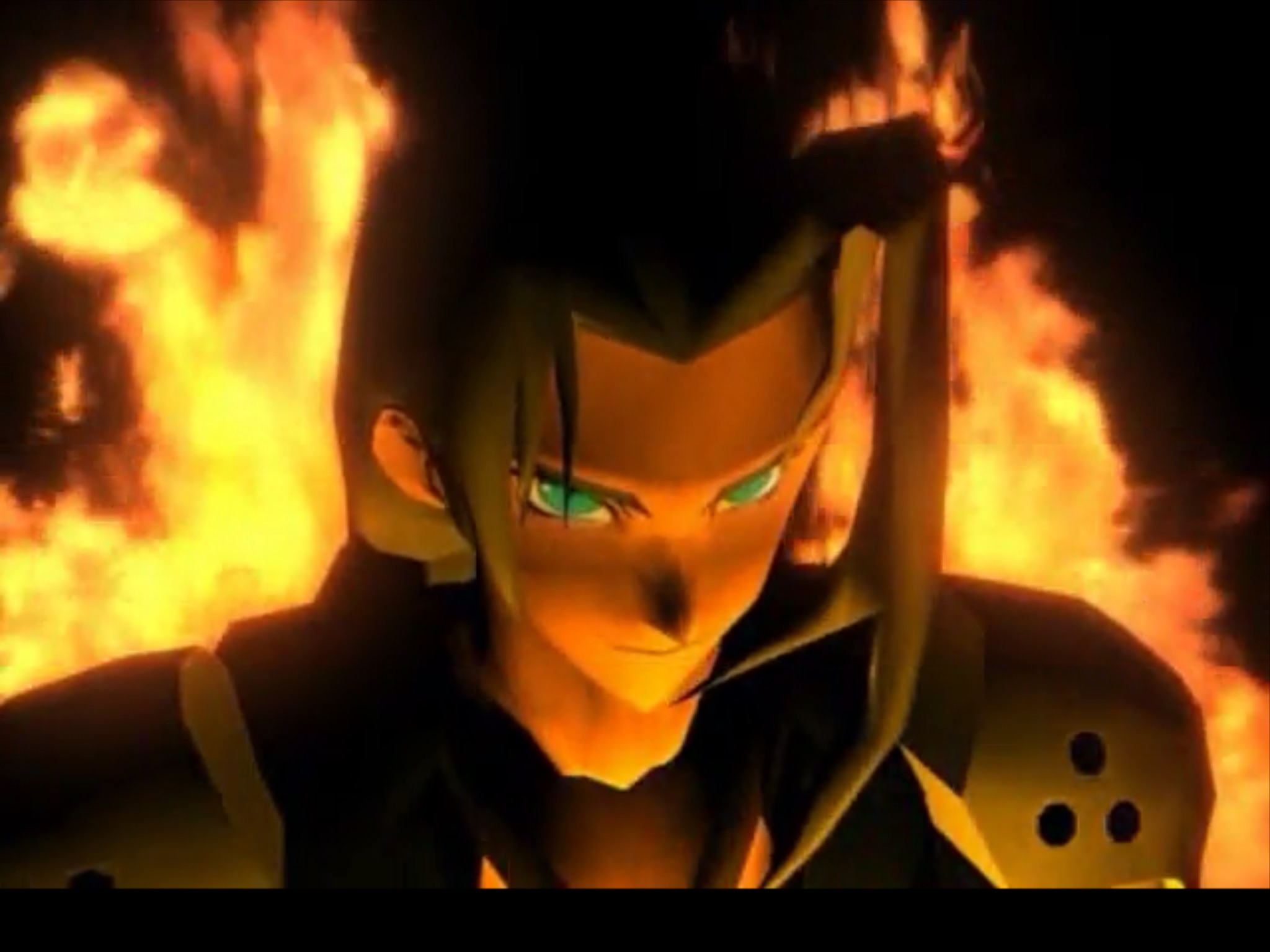
Most of that holds true even now, in this 2015 iOS port. The presentation has lost a lot of its jazz, to be sure, but there’s still a certain nostalgic charm to its blend of simple polygonal figures and rendered, low-resolution backgrounds. It probably won’t take your breath away anymore when video takes over one of those backgrounds and makes them come to life, but it’s still a pleasing technique. In spite of its release on the PC the following year, Final Fantasy 7 was never really meant to be played on anything other than a PlayStation hooked up to a CRT television, so there are naturally a lot of things that don’t look great on iOS displays. The backgrounds look more pixelated than ever, the polygon seams are more clearly visible, and the game uses borders if you’re on a device that deviates from the supported aspect ratios from 1998, when the PC port this version is based on was released. There’s not much Square could have done about any of this stuff without doing some extensive (and expensive) work. Many of the original assets have been lost for a long time, so they can either use what they have, or rebuild them. A remake is on the way for PlayStation 4 if you want the latter, but iOS users will have to make do with the former.
Likely for similar reasons, this is the first of Square Enix’s iOS Final Fantasy ports that doesn’t use the touchscreen for anything other than manipulating virtual buttons. You can use an MFi controller if you have one, but otherwise, everything from movement to menu navigation is handled by on-screen buttons corresponding to just about every button on a PlayStation controller. With the dynamic camera moving around constantly during battles, it’s easy to see why they couldn’t work in touch controls there, but it is a bit annoying to have to go through shop menus and equip screens without being able to just tap on the things you want. The virtual controls are decent enough, but having that many buttons placed on the screen doesn’t look all that good, especially on smaller displays.

In addition to the issues that Square Enix probably couldn’t reasonably have done much about, however, there are a few places this port drops the ball where it could certainly do better. First and foremost, the save function. Final Fantasy 7 allows you to save in the same places the original did. That is to say, you can save at save points, or on the world map. Save points are generously scattered around, but you won’t even see the world map until you’re several hours into the game. If the game is booted out of memory for whatever reason, you can only resume from your last save. There’s an autosave feature, but it only saves on the world map after exiting a dungeon, town, or battle. I can guess that Square Enix isn’t big on save states, but it probably would have been better than nothing here if a quicksave or resume function couldn’t be implemented. Mobile RPGs need convenient save functions. There’s no ifs, ands, or buts about that. On the positive side, the game does support iCloud saving, so you can at least move your saves around or delete the game without losing your progress.
There are also a few bugs. None of them are particularly game-breaking, and they’re even unintentionally funny in some ways. Certain iOS versions seem to run animations outside of battle at unnaturally high speeds. I’ll say this, it makes Palmer even funnier than he already is. A device reboot sometimes clears this up, but not always. I have to wonder if this was a by-product of making the battles run at a better framerate, but your guess is as good as mine. Another problem comes from one of the few changes made in particular for this version. Your character now runs by default, rather than walking, and what was once the run button is now assigned to walking instead. This is a great change, but one sequence requires you to sneak out of Aerith’s house unnoticed. Logic dictates you’ll want to move slowly here, which means walking. Unfortunately, in this situation, the game is looking for you to not push that button that was once assigned to run, so if you try to walk out, you’ll get busted. You have to run out instead. Not a big deal once you know how, and perhaps it shows just how difficult it is to make even a small change to the game without something somewhere messing up.
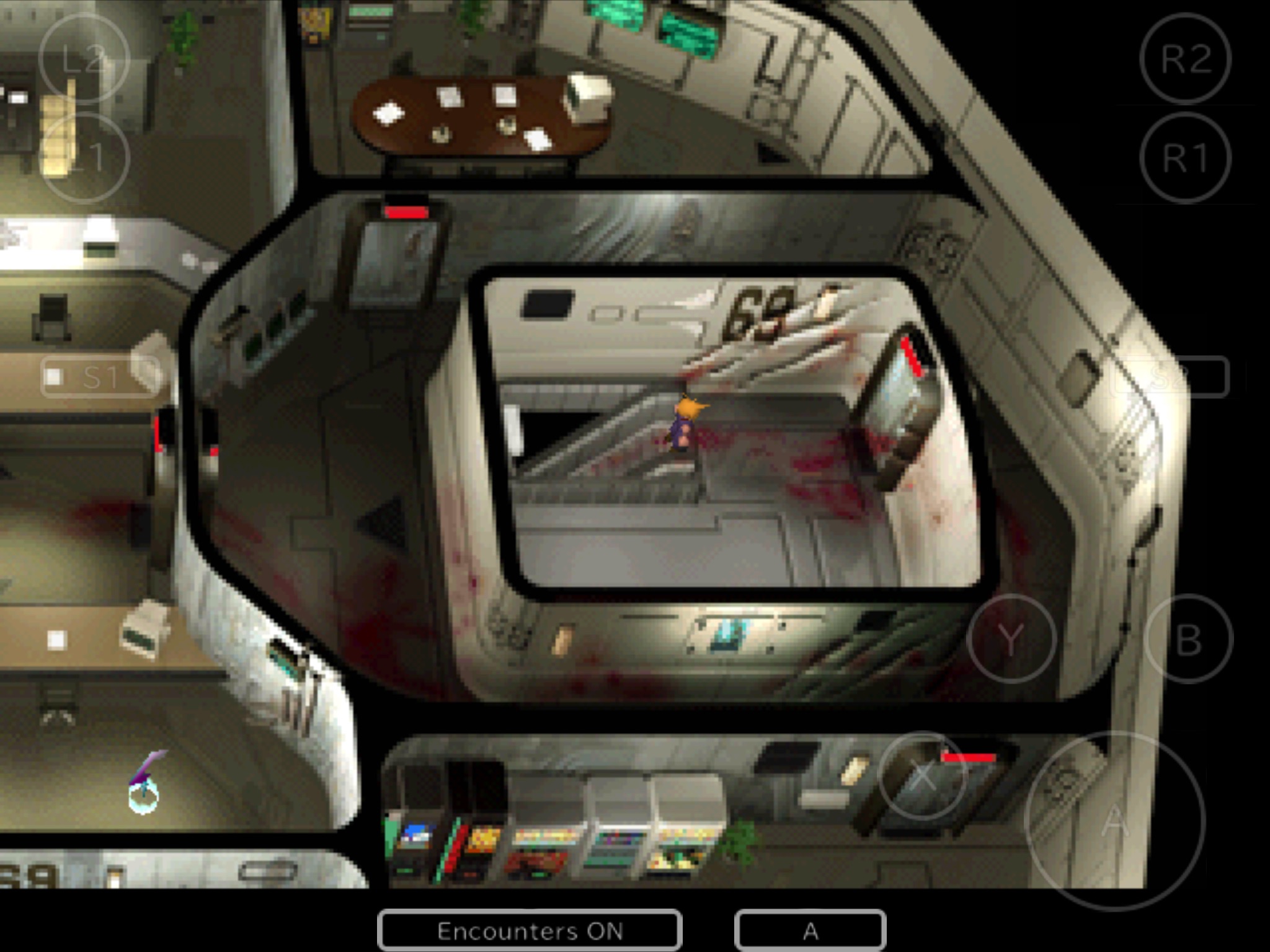
If you can take that all in stride, this is actually a perfectly serviceable version of Final Fantasy 7. The mini-games work well enough with the virtual controls, the loading times are greatly reduced as compared to the original PlayStation version, and all of the interesting new options from the Steam release of the game have been carried over. That means players who just want to zoom through and enjoy the story can press a button to max out every stat, flick off encounters, and cruise through. Similarly, expert players who want to make things a little spicier can now simply turn off encounters to keep their levels low rather than the tedious process of running away. For everyone in between, being able to flick encounters on and off is a small, but appreciated update. You’ll make it hard on yourself if you use it too much, but being able to double-back and check a different branch in a dungeon without getting slammed by meaningless encounters is pretty useful, as far as I’m concerned.
That just leaves the game itself. Although many people disagree, I believe very firmly that while certain aspects of games can age over time, a truly good game will always be good. Final Fantasy 7 has lost its visual shine that drew so many eyes to it, and there’s no doubt that the series and the genre have changed greatly in the last 18 years. In those respects, Final Fantasy 7 shows its age. The sizzle has cooled, and what is left is a meat-and-potatoes JRPG with a wild, sometimes nonsensical, but nevertheless entertaining story. For better or worse, they really don’t make them like this anymore, which means there’s certainly room for another visit to Midgar and Nibelheim, provided you’re looking for the usual JRPG trappings. Some of the mini-games are better than others, and what felt clunky then surely doesn’t feel better now, but they’re quite appreciated in terms of building the character of the game and busting up strings of ATB battles and trying to sniff out hotspots in the prerendered backgrounds.
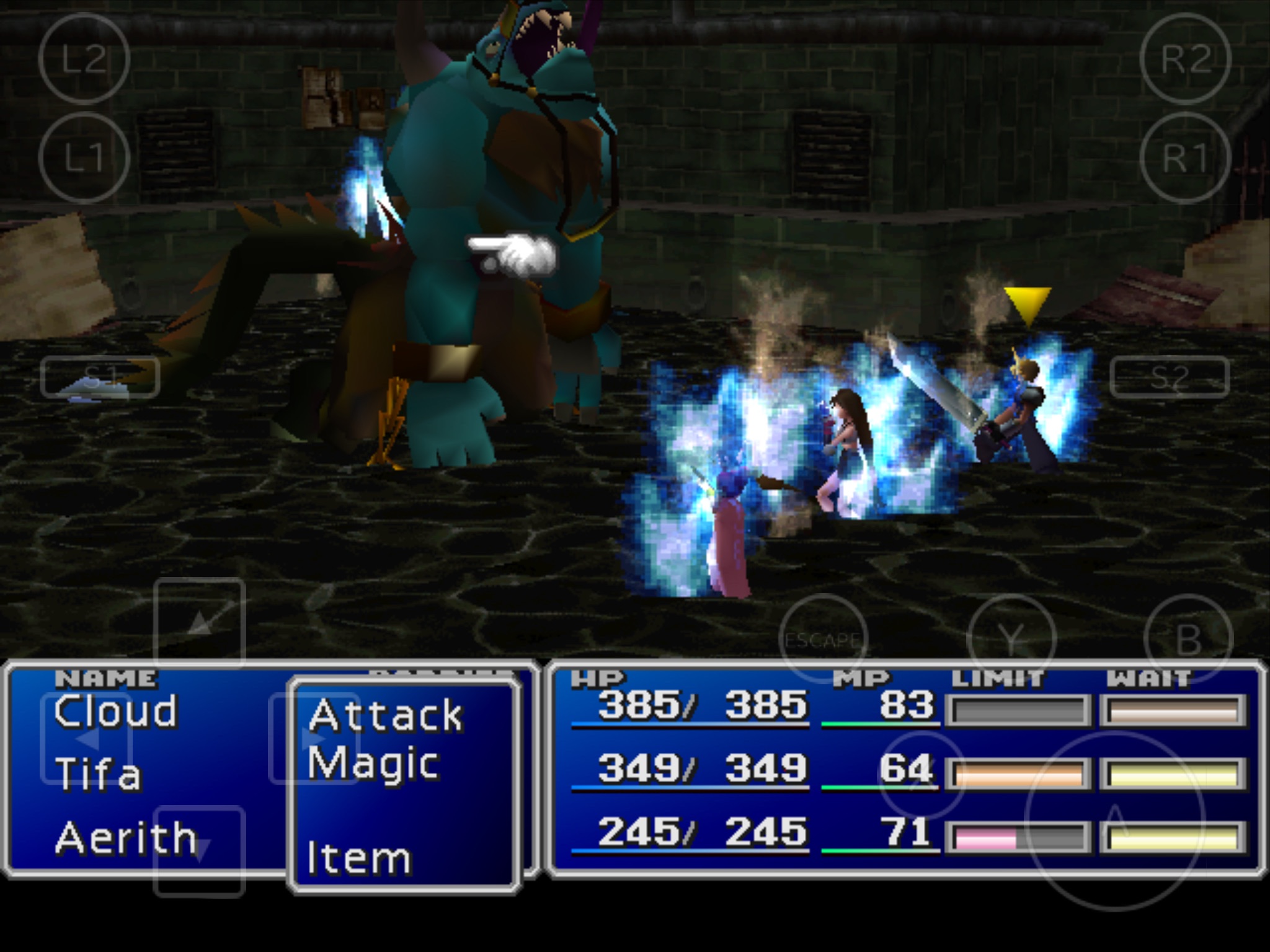
While the game itself is of average length for the genre, running about 40 hours or so, it feels incredibly big. You’ll spend the first several hours of the game in a single city, and it’s hard to describe the feeling that comes from taking your first steps outside of it. The plot is kind of silly, but the characters are interesting, so they manage to hold things together for most of the story. And you know, for as much as people rightfully pick at the story, I think Final Fantasy 7 has a lot of little scenes and moments that work very well. Cloud’s recollection of his visit to his hometown and the conversations with his mother has a lot of subtle emotion to it. It’s the kind of situation where we claw at our memories to remember something that we didn’t feel was important to pay attention to at the time. It’s not terribly important to the overall story, or even to the thread going on in that section of the game, but it’s handled very nicely. There are lots of scenes like that, and while I won’t list more for the sake of first-time players, I think they give the game an emotional resonance that lifts its overall narrative. Yes, a lot of stupid, wacky, and bizarre twists come, but there’s also a real, honest melancholy tone to the game, and little bits like that help keep you following along when things go strange.
I also genuinely appreciate the game’s cheeky sense of humor. This game is often cited as a dividing line for the series, with a lot of people putting the first six games on one side of the line and everything else on the other. I’m not sure I agree with that exactly, however. I think Final Fantasy 7 is a line in and of itself. It has one foot planted in the goofy charm the earlier games often displayed, with characters breaking the fourth wall, mugging for the camera, and suddenly developing the oddest of talents, while simultaneously planting its foot firmly in the self-serious drama many of the later installments would adhere strictly, too. This Final Fantasy isn’t afraid to laugh at itself, even while it gets deadly serious at times. I feel like it has a lot in common with Final Fantasy 6 in that regard. Its use of slightly abstracted models for the characters helps greatly with that. There’s a famous sequence in the Wall Market area of Midgar where you’re putting together pieces for a disguise, and I simply can’t imagine that working nearly as well when the remake tries to do it with more realistic models.
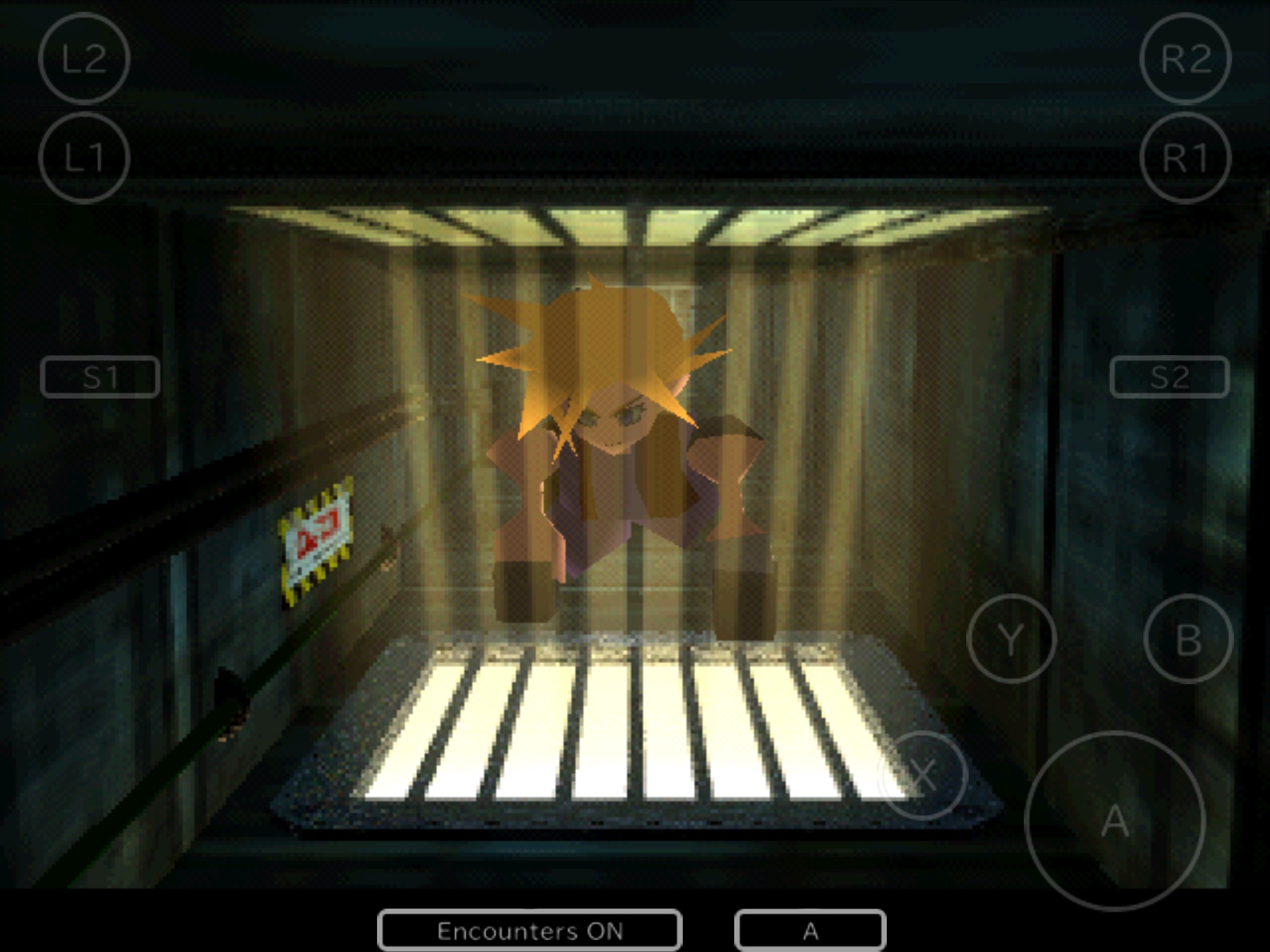
As far as the mechanics go, Final Fantasy 7 mostly builds on those found in the sixth game. Limit Breaks return, but instead of being as rare as a solar eclipse, they’re a regular staple in battles. The Magicite System in the sixth game gets a few tweaks and becomes the Materia System. Characters have their own stats, weapons, and Limit Breaks, but every other ability is contained in your materia, magical stones that you can add to your weapons and armor. Your characters will level up through experience, while materia becomes more powerful from AP earned in battles. It makes the characters largely interchangeable, since you can always just move your materia set-ups from one character to another. That works in the game’s favor at times, but at the cost of feeling invested in any particular characters from a gameplay point of view. The main advantage to it is that there’s no real way to lose out. Characters who leave your party for story reasons won’t take your investment with them. It’s not my favorite Final Fantasy customization system, but it’s decent enough, and it is definitely fun to collect all of the various materia, even though assured madness lay down that path.
I feel like the game kind of loses itself after what was originally the end of the first disc, when the most well-known spoiler in video gaming happens. It’s almost metafictional the way the game itself feels like it’s in a state of confused grief for a while before it starts to pick up the pieces and move on. There are lots of side-trips that don’t quite hit the mark, like the first trip to Wutai, or the bizarre business with an old friend of Barret’s. The game sometimes feels like it’s dragging during some of these jaunts, though they never actually last all that long. The move away from tile-based 2D also introduced some control awkwardness that the series would resolve in later games, but not here. You sometimes have to be in just the right position to talk to someone or examine something, and your character will sometimes stubbornly resist getting into said position. The battles can also feel pretty slow, especially when participants let rip with their powerful attacks. You can’t skip summon animations in this game, nor can you skip Sephiroth’s two-minute special attack, or any other overly-long sequence. They’re impressively cinematic, but sometimes you just want to get on with things, and you can’t do that here. My kingdom for a fast-forward button in battles to go with my bugged, sped-up Palmer outside of battles.

Naturally, the usual Final Fantasy problems are here, too. Regular battles feel meaningless due to their lack of difficulty and the fact that you can cheaply heal up at a save point right before almost every boss. Finding certain items and materia can be so convoluted that it would be nearly impossible to figure out how to track them down on your own. It’s a characteristic particularly present in this period of gaming where guide sales were the industry’s up-sell of choice over IAP hats, and while it definitely becomes worse in the next couple of Final Fantasy games, there are still some absurdly obscure things here. Status ailments are extremely hard to stick on enemies, rendering too many abilities useless. The game doesn’t have much in the way of teeth except in optional battles, so if you’re looking for a challenge, this probably isn’t the best place to get off the train. That said, the optional battles that are in here are absolutely wonderful tests of your mastery of the game. The rewards for beating them probably won’t be of much use by the time you’re strong enough to do so, but simple victory is a rewarding enough feeling.
While the visuals have lost a lot of their luster, Nobuo Uematsu’s stunning soundtrack is still a treat for your ears. It goes in a very different direction from Final Fantasy 6 ($14.99), and while it’s not my favorite in the series, Final Fantasy 7‘s soundtrack is home to some of the best tracks in the whole series. I swear, half the reason people even like Sephiroth is because of his epic theme, but beyond that famous track sits a wonderful variety of tunes that cover the many ups and downs of the game. Rounding out the presentation, the localization has seen a few touch-ups compared to the original. Don’t hope for too much of an improvement, though, since the changes are mostly concerned with blatant grammar errors and so forth. It reads well enough, but it does come off a little stilted compared to the more recent translations found in Square’s other iOS Final Fantasy releases. As a funny side note, they still haven’t fixed the dialogue mistake in one of the early bosses that gives you the exact opposite advice you need to win the battle.
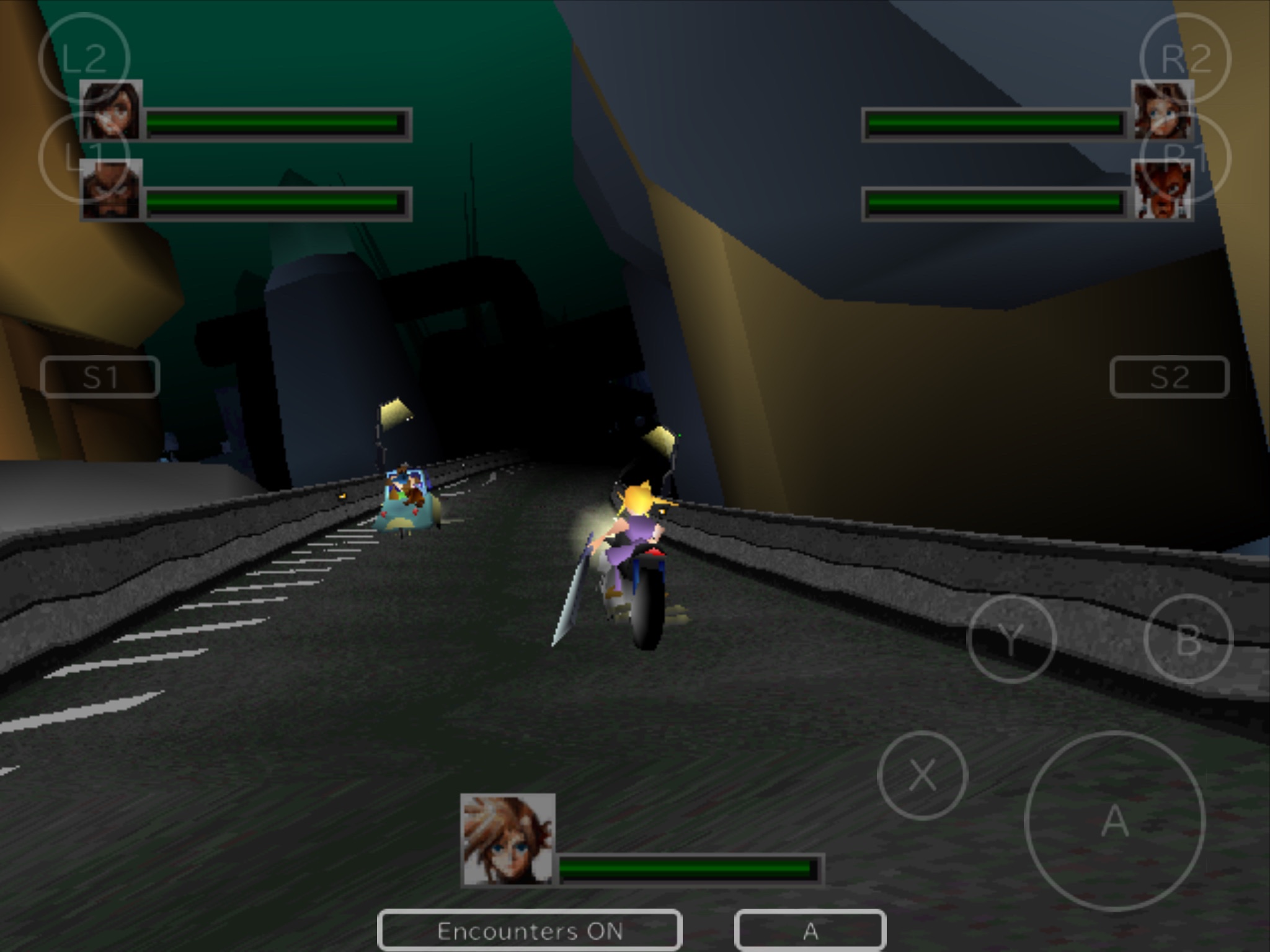
Setting aside the lack of a decent save function and a couple of bugs, this is probably the best Final Fantasy 7 port iOS gamers could have reasonably expected. That said, although I don’t think Square had many good options here, the lack of touch controls, the borders that appear on many devices, and the overall grainy look of the game are certainly things that prospective buyers will want to keep in mind. Support for MFi controllers, iCloud, and the addition of a couple of cheat options are welcome, but I really do wish Square Enix had done better by the save system while they were doing their thing. As for the game itself, you can love it, you can hate it, and I’ve certainly done both over the last 18 years, but however you rank it in the overall series, I feel like it’s hard to argue against it being a really good JRPG.